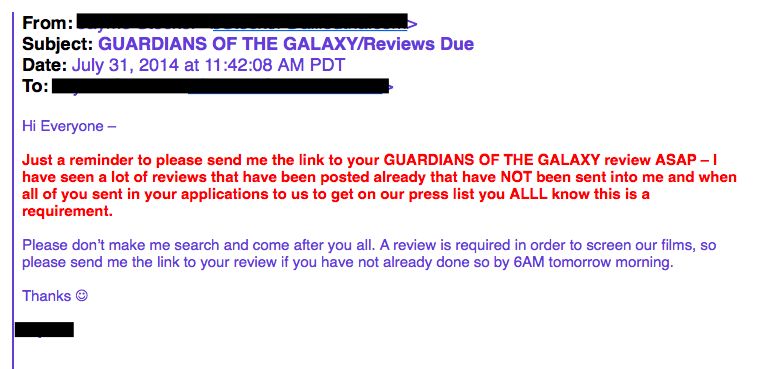
I’m no longer going to press screenings. I’ll tell you the whole story later (of course there’s a story) [UPDATE: Here is the story], but first let me explain how this changes things vis-a-vis my reviewing movies:
Hardly at all.
It means I won’t have reviews posted on opening day, but that was becoming rarer anyway. Of the 33 wide releases so far this year, 12 of them — more than a third — opened without being shown to critics first. What used to be a notorious exception (anyone remember “Hollywood’s shameful secrets”?) is now commonplace.
What’s more, movies that “open” on Friday usually start showing at 7 p.m. Thursday. So if I MUST have a review Friday morning, it’s still feasible.
I admit it sounds Very Bad for a movie critic not to be able to go to press screenings. I was alarmed when the news first arrived. But I very quickly came to see the advantages. Let me show you.
True “press screenings” (only critics invited, no audience) have grown rare in Portland. Most are promotional screenings, held in the evening, with a couple rows taped off for critics and the rest of the seats filled by whoever the studio drags in off the street.
We have to be at these things 30 minutes early (45 minutes, technically, but most of us adjusted that). About half of them are held at a theater south of Portland, 14.4 miles from my apartment, a drive of anywhere from 20 to 45 minutes depending on traffic, which is unpredictable and always overlaps with the end of rush hour.
Then the movie starts (somewhere between four and 10 minutes late, never at 7:00 sharp, because the studio rep is trying to fill every single seat) and we watch it in a theater jam-packed with people who are seeing a free movie before it opens. These crowds are often, um, excitable. And smelly. I’ve talked before about the “screening rats,” the people who come to every single one and act like rude, entitled brats. There are a lot of them.
Start to finish, from the minute I leave till the minute I get home again, the process of seeing a 90-minute movie at one of these screenings takes at least 2 1/2 hours. It occupies the entire evening, sometimes three evenings a week.
Compare that to the civilian method of seeing movies. I can go to the theater 3.3 miles from my house, arrive 10 minutes late to miss most of the trailers, and see a movie in a theater that is, on average, no more than 30% full. I can choose if I want to see it in 3D (spoiler: I don’t) rather than have 3D foisted upon me. The two movies that would have eaten my whole Monday and Tuesday evenings, I can see back to back in one evening in a far less hectic environment. It’s more efficient all the way around.
What about the cost, though? All those movie tickets are expensive! Not with MoviePass they ain’t. You pay $10 a month (currently $7!) and you can see a free movie every day (only one a day, though, so I do have to pay* for half if I do a double feature) (*or something).
Here are the downsides of not going to screenings:
- I don’t get to see my movie critic friends as much, though most of my longtime Portland screening-mates have gone on to other things anyway.
- I will miss a few freelance opportunities where I would have needed to see the movie early, but not a financially significant amount.
- I no longer get carefully crafted passive-aggressive emails like this:
Honestly, it feels like a burden has been lifted, and I’m not just saying that because I don’t have access anymore. I’ve had a few weeks to adjust to my new lifestyle, and I love it. I spent almost 19 years beholden to the screening schedule, which varied from week to week and was rarely announced more than seven days in advance. All my weeknight plans had to be tentative: “Yes, unless I have a screening.” Now I know my Thursdays are spoken for, and everything else is open. Consistency! Blessed, soothing consistency.
P.S. I know MoviePass’ business model is unsustainable, but that’s their problem, not mine.





